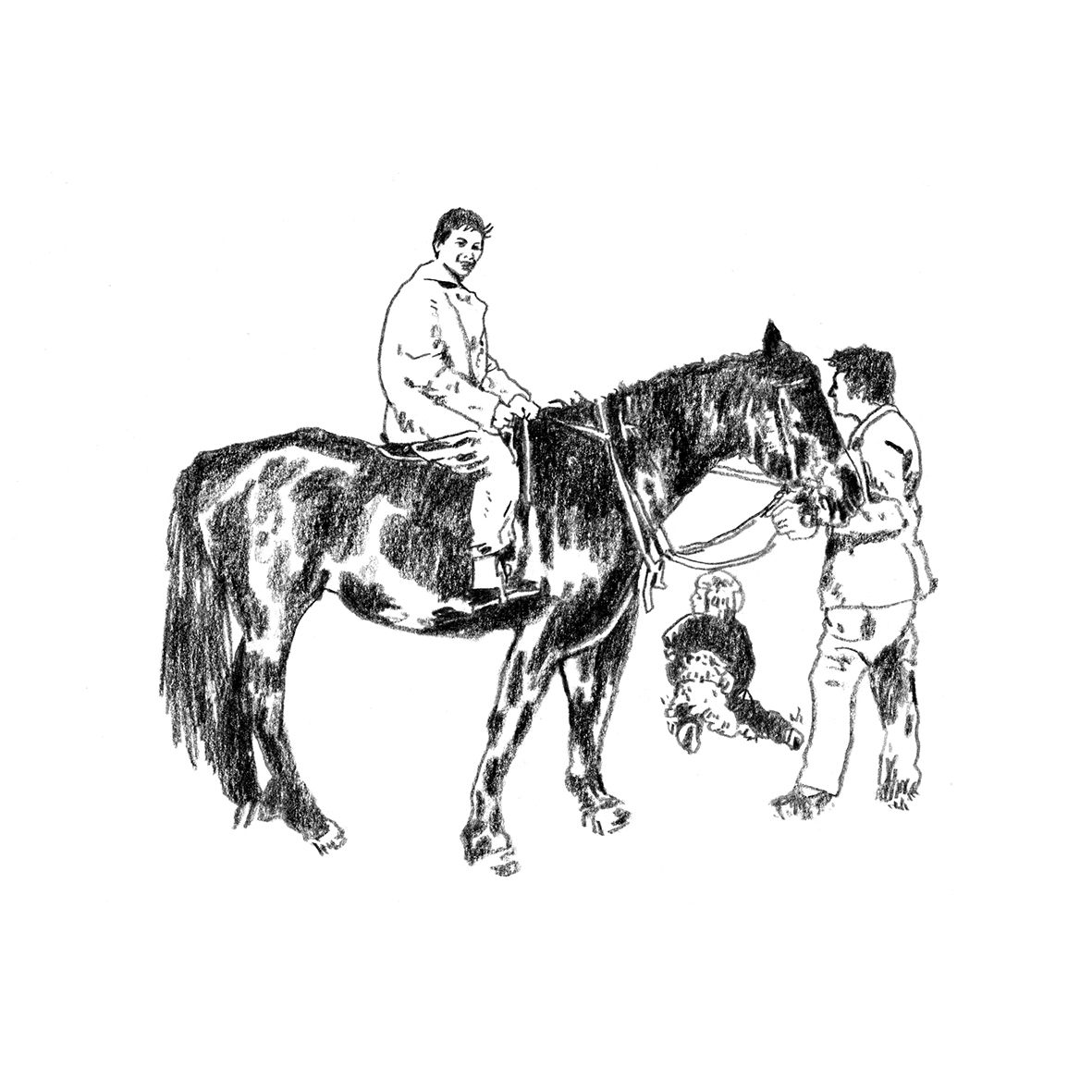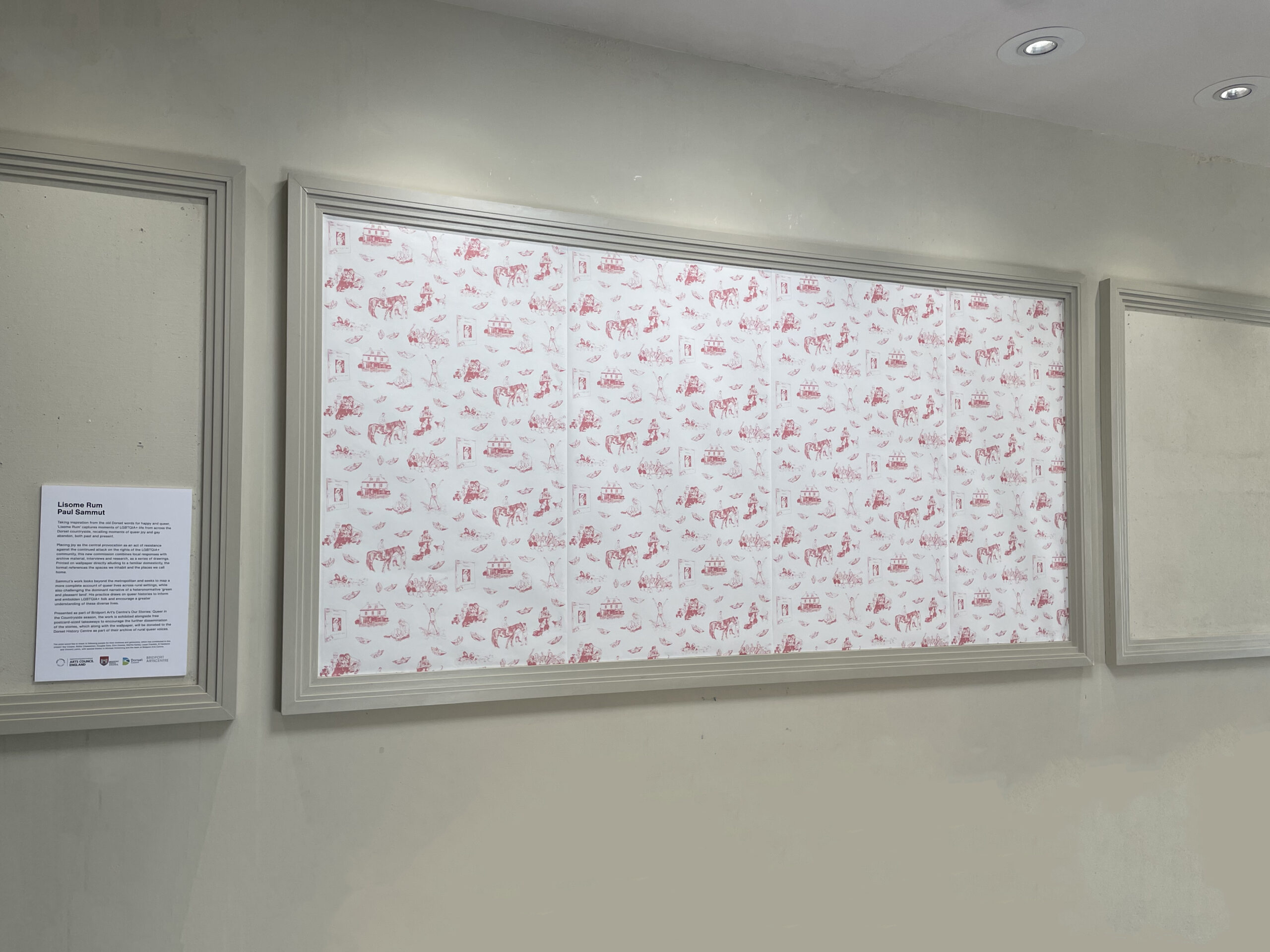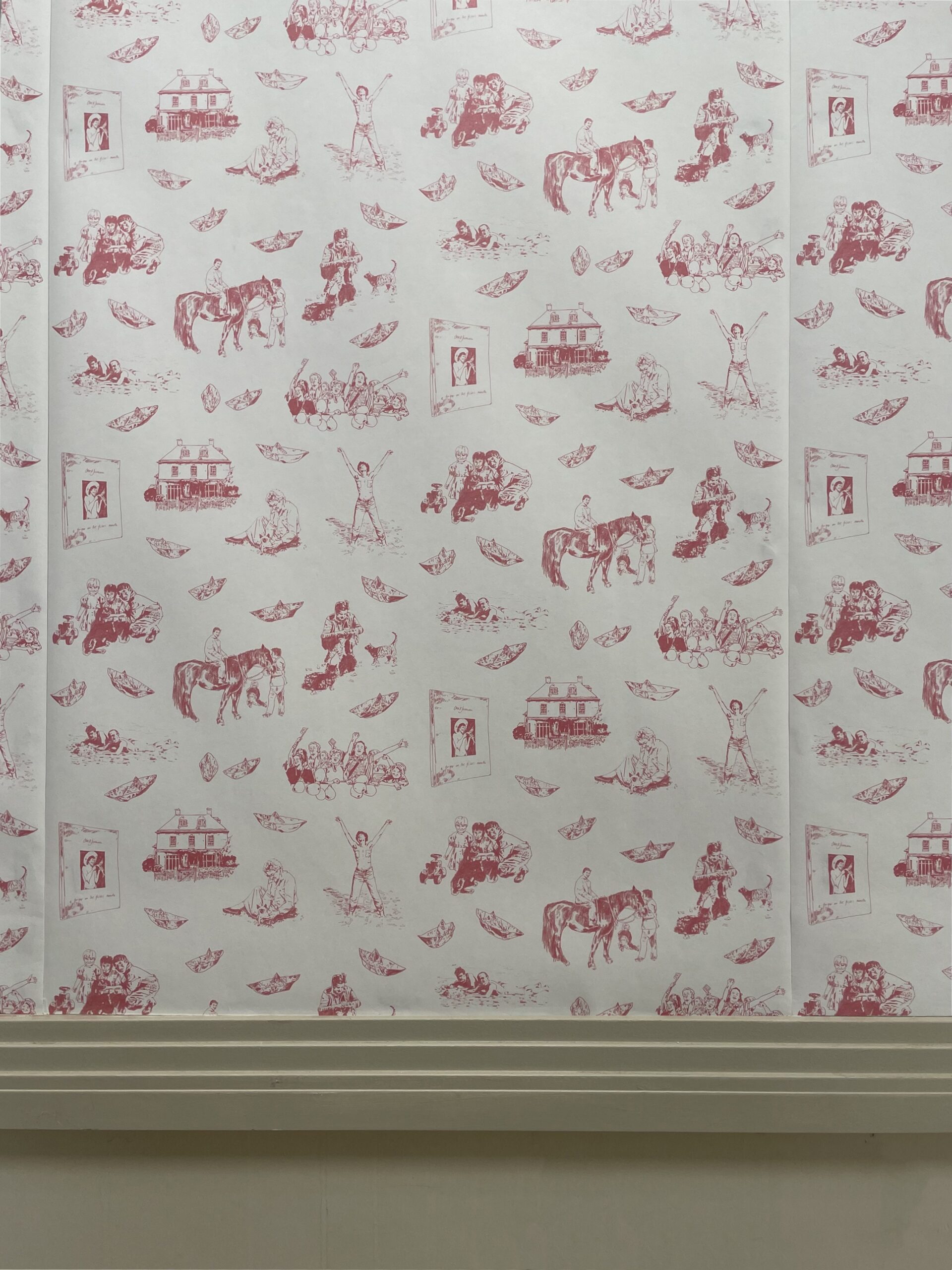This past summer Bridport Arts Centre held a season of events titled “Queer in The Countryside”, for which BAC’s Director, Claire Tudge, set out
‘to demonstrate and acknowledge their unique position as a multidisciplinary arts centre to use storytelling to highlight issues and contribute towards importance societal discourse.’
In this blog, artist Paul Sammut talks us through his contribution to the exhibition, which has been deposited at DHC for permanent retention.
—
The Arts Centre prides itself in the platforming of diverse voices and this season was an opportunity to foreground local stories that might not otherwise be heard.

The season was co-curated by producer Michael Armstrong who invited me to participate after seeing my recent commissioned for Lighthouse, Poole, Queer-as-Dorset, which collected and shared LGBTQIA+ histories from across Dorset. Through discussions with Michael, I was moved to suggest that we try and put together a work based on notions of Queer joy in the countryside – sharing stories of people in Dorset who have had positive experiences living rurally and being queer. Historical research into marginalised lives is difficult for many reasons, but one of the rudimentary ways of identifying people who have had queer experiences is through finding criminal records. The connection to criminality immediately portrays negative aspects of the individual’s life. We also announced an open call for local people to contribute stories or anecdotes about being LGBTQIA+ that connect joy to their queer experiences.

The outcome was a wallpaper titled Lisome Rum from the old Dorset words for ‘happy’ and ‘queer’, containing a repeating pattern of images drawn from the research. The form of wallpaper suggests a sense of domesticity and an embeddedness within the landscape, hopefully to make clear that LGBTQIA+ folk have always been a part of all kinds of communities throughout history. I attempted to maintain a diversity of stories in the work including: the joy of a local organiser and activist in their gender transition; writers Sylvia Townsend-Warner and Valentine Ackland outside with their cats; musician Douglas Dare as a boy wearing a dress while out playing with his brothers and their dog; silver paper boats filmed floating into the sea at Dancing Ledge by artist and activist Derek Jarman; and Long Crichel House, once a haven for a community of queer men and their friends.

The specific focus on the notion of queer joy is ultimately an artistic act of resistance against the ongoing attacks on queer rights taking place across the world. Despite the rolling back of rights, and even divisions within our communities, there is love, and joy, and an ability to make space for connection. The final element of the project was for us to print some postcards that were available to take away for free. The postcards depict drawings from the wallpaper and can be shared, to spread the joy to anyone else who may need it.
Lisome Rum has now been donated to Dorset History Centre so that others are able to find it and learn about the wealth of happy queer lives Dorset has, and does, play host to.
—
This was a guest blog for Dorset History Centre by Paul Sammut. All images used within the blog are his copyright. If you are interested in writing a guest blog, please contact us at archives@dorsetcouncil.gov.uk to discuss your idea.

